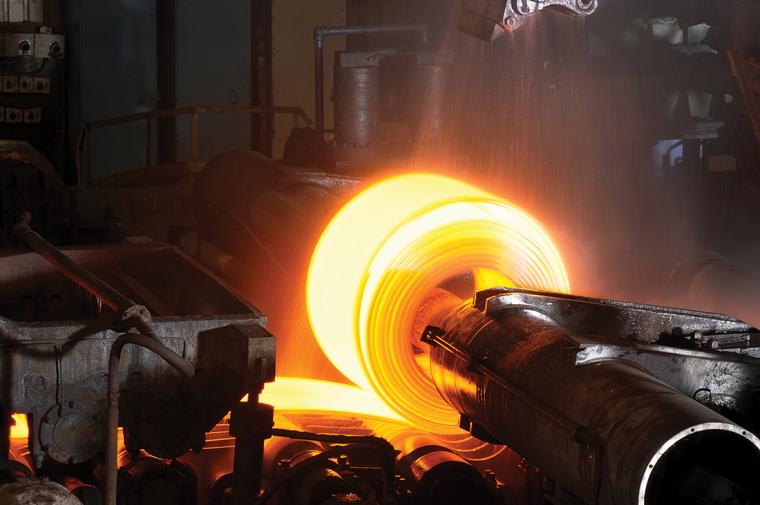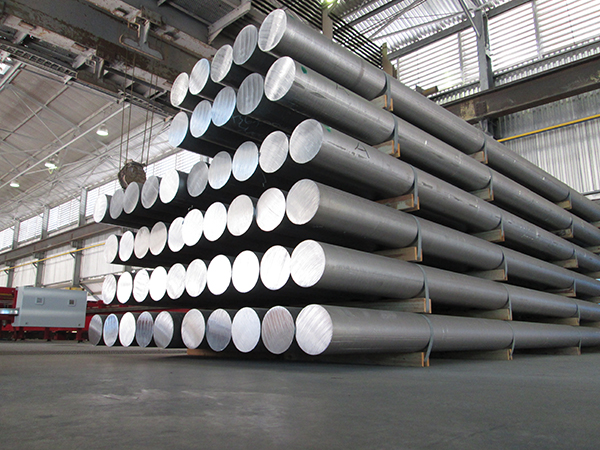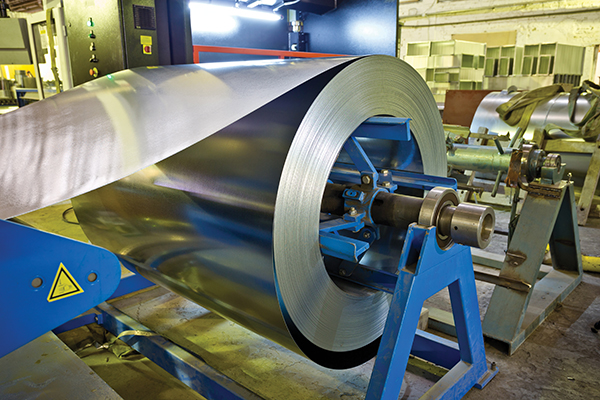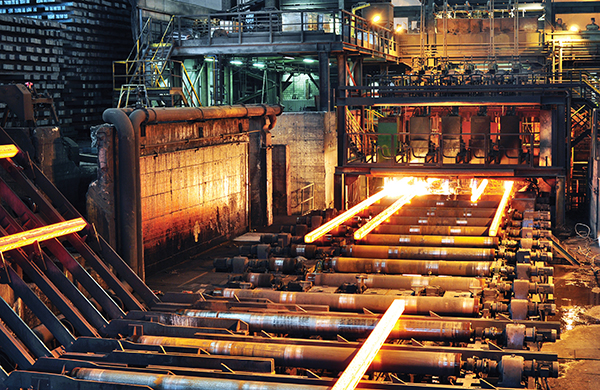
The U.S. primary metal manufacturing sector is facing a pivotal moment. Once a pillar of American industrial power, the industry now faces a wide mix of emerging opportunities and structural challenges. From outdated infrastructure, high energy costs and global competition, to increased investment and strategic policy shifts, the landscape is evolving rapidly, and the decisions made today will shape the sector's trajectory for years to come.
In a newly released 2025 U.S. Best Places for Primary Metal Manufacturing Insights Report, Global Location Strategies ranked all 387 U.S. metropolitan statistical areas (MSAs) for their suitability for primary metal manufacturing. The sector encompasses industries engaged in the smelting or refining of metals or alloys with various metal combinations for the production of refined metal products. Beyond the rankings, the report reveals deeper insights into the forces reshaping the industry and the areas of the country best positioned to lead its next chapter.
Structural Challenges Facing the Industry

Primary metal manufacturing, including iron and steel mills, aluminum smelters, foundries and nonferrous metal producers, has long supplied the raw materials essential to industries like construction, automotive, energy and defense. Yet despite its strategic importance, the sector has seen a 21 percent decline in employment over the past two decades, which is almost double the overall manufacturing decline of 10 percent.
Overall, manufacturing employment has rebounded from a significant decline due to the impact of COVID-19, but the primary metals sector is still lagging. As of Q1 2025, the sector employed 370,653 workers, still five percent below pre-pandemic levels. Foundries, which account for nearly a third of all jobs in the sector, saw the steepest drop: down 14 percent since COVID-19.
The reasons for employment decline are multifaceted: and include factors such as automation, offshoring, volatile commodity pricing and rising energy costs. Adding to the complexity, individual industry groups within the primary metal sector are reacting differently to current challenges. Steel product manufacturing has proven to be the most stable and fastest to recover from the pandemic, with employment slightly above pre-pandemic levels.
Federal funding has played a significant role in this stability, with the Bipartisan Infrastructure Investment and Jobs Act allocating $550 billion over fiscal years 2022 through 2026 to infrastructure development; not to mention the Build America, Buy America Act that mandates all iron, steel, manufactured products and construction materials used in federally funded infrastructure projects must originate from the United States.
Primary aluminum production, on the other hand, has faced a much more difficult post-pandemic path. Since 2020, domestic production has fallen 34 percent, and as of 2024, nearly half of U.S. aluminum consumption relied on imports. Limited domestic production can be attributed to several factors, including aluminum’s commodity pricing and manufacturer sensitivity to cost fluctuations. In addition, bauxite, the raw material from which aluminum is extracted, remains a limited resource in the United States, causing it to be the world’s largest importer of aluminum.
Tariffs and Trade: A Double-Edged Sword
In March 2025, the United States reinstated 25 percent tariffs on steel and aluminum imports, removing exemptions for key trading partners. The move, aimed at bolstering domestic production, was welcomed by U.S. mills and smelters. Prices for hot-rolled coil steel surged to $860 per short ton in February 2025 and peaked at $935 per short ton in March 2025. However, prices have gradually declined since mid-year, to around $875 per short ton as of mid-August 2025. Domestic prices continue to face pressure, as import offers have increased but remain competitive and the tariff impact has been offset by continued weak domestic demand.
While tariffs offer protection and may spur domestic investment, they also raise costs for downstream industries – automotive, construction and energy, to name a few – which now face higher input prices and disrupted supply chains. Furthermore, domestic investment in new facilities is not a quick process, with projects typically requiring three to five years to become operational. Many industries face difficult choices: absorb costs, raise prices or overhaul supply chains, all while hoping domestic metal supply expands in time to meet demand. The long-term impact on global competitiveness and trade relations remains uncertain.
Investment Momentum and Foreign Interest

Despite its challenges, the sector continues to attract significant capital. According to FDI Market data, between 2024 and Q1 2025, there were 52 primary metals projects announced, totaling $15.1 billion in investment and 8,298 jobs. Of this, $10.5 billion was announced in 2025, led by Hyundai Steel’s project in the steel products sector, a new production facility in Donaldsonville, Louisiana, with $5.8 billion in capex and 1,300 jobs. The steel products sector led in total investment and projects, accounting for nearly 44 percent of all activity during this period.
Notably, foreign direct investment (FDI) surged, accounting for 58 percent of all projects in the U.S. primary metal manufacturing sub-sector in 2024 – Q1 2025. European firms, particularly from Switzerland, Italy, Japan and Sweden, are also making strategic moves. The largest single investment came from Luxembourg, with ArcelorMittal’s $1.2 billion expansion of its Calvert, Alabama, facility. This influx of foreign capital reflects growing confidence in the U.S. market, especially in regions offering competitive costs and strong infrastructure.
Cost Drivers and Site Selection Strategy
As the United States looks to increase domestic metals production, cost of operation will continue to drive manufacturers toward specific locations. For primary metal manufacturers, utility costs are the most significant location-dependent expense, comprising 62 percent of operating costs. Electricity, in particular, is highly sensitive; just a one cent/kWh increase can add $3.5 million annually to operating costs for a typical primary metal manufacturing operation.
Labor costs, lease rates and taxes also vary widely by region. GLS’ composite model evaluates metros based on both location quality and operating cost, categorizing them into four quadrants:
- Quadrant I (Preferred Locations): High quality, low cost
- Quadrant IV (Premium Locations): High quality, higher cost
- Quadrant II (Budget Locations): Lower quality, low cost
- Quadrant III (Unfavorable Locations): Low quality, high cost
Top-performing metros like Knoxville, Tennessee, and Toledo, Ohio, fall into Quadrant I, offering the best balance of cost and quality.
Infrastructure, Energy and Environmental Compliance
Beyond cost, infrastructure and permitting are critical. Many U.S. facilities are decades old, lacking modern equipment and energy efficiency. As of Q1 2025, industrial electricity prices had increased, up 23.1 percent since 2020, and grid constraints are making expansion more difficult. Running in tandem with high energy costs is the struggle to meet the U.S. electricity demand, which has reached all-time high levels. According to a 2024 report by Grid Strategies, U.S. electricity demand is forecast to rise by 128 gigawatts (GW) by 2029, driven primarily by the growth of data centers and manufacturing sectors. The current U.S. electric infrastructure, however, does not have the capacity to meet this demand, causing multi-year interconnection lead times and high upfront costs.
Environmental regulations also pose challenges. Compliance with EPA standards for air and water pollution requires substantial investment. In 2024, U.S. Steel agreed to a $24.5 million settlement, including $19.5 million for equipment upgrades and $5 million for local clean air initiatives.
Yet these challenges also present opportunities. Facilities that modernize and embrace sustainability can gain a competitive edge, especially as ESG considerations become central to investor and customer priorities.
U.S. Regions Fit for Primary Metals

In the 2025 GLS Insights Report, analysis revealed a growing regional divide for primary metals performance. The East South Central region, home to Tennessee, Alabama, Kentucky and Mississippi, emerged as the top performer, accounting for 29 percent of all primary metals projects and hosting five of the top 10 metropolitan statistical areas (MSAs). Respectively, the MSAs of Knoxville, TN, Huntsville, AL, and Chattanooga, TN-GA, ranked #1, #2 and #3 nationally.
The East North Central region also performed well, with the MSAs of Toledo, OH, (#4) and Fort Wayne, IN, (#6) entering the top 10. Meanwhile, the West North Central region recorded the greatest improvement in average MSA rank and the highest increase in quality scores, while maintaining one of the most moderate increases in operating costs.
In contrast, the Southwest, Northwest and Northeast regions have consistently lagged in attracting primary metal manufacturing projects. High operating costs and limited infrastructure have led to low project activity over the past five years, contributing to their underperformance in the rankings.
Case Study: ArcelorMittal: A Billion-Dollar Bet on U.S. Steel
In 2024, ArcelorMittal announced a $1.2 billion expansion of its Calvert, Alabama, facility, a co-location project in iron and steel mills and ferroalloy manufacturing expected to create 260 new jobs. This investment underscores the strategic importance of the Gulf Coast region and reflects growing confidence in U.S. steel production amid shifting trade policies. This project is located within the Mobile, AL, MSA, which ranks #120 in the report and stands out for its solid workforce and logistic infrastructure for a primary metal manufacturing operation.
Calvert’s location offers direct access to deepwater ports, rail infrastructure and a skilled labor pool. The expansion aligns with broader trends in reshoring and supply chain resilience, especially following the reinstatement of 25 percent tariffs on steel and aluminum imports in March 2025.
ArcelorMittal’s decision also highlights the role of foreign direct investment (FDI) in revitalizing U.S. manufacturing. As a Luxembourg-based company, ArcelorMittal’s commitment to Calvert signals that global players see long-term value in American industrial assets.
The investment in Calvert represents a high-impact investment reshaping the future of U.S. steel and demonstrates how strategic location decisions can drive growth, resilience and legacy in the primary metals sector.
Case Study: Emirates Global Aluminium (EGA): First New U.S. Primary Aluminum Production Plant in 40 Years
This year, EGA announced a transformative industrial initiative involving a $4 billion capital investment and the expected creation of up to 1,000 direct jobs at the Tulsa Port of Inola, just outside of Tulsa, Oklahoma. The project, which demands a large-scale site, robust infrastructure and access to carbon-free electricity, natural gas and water, stands to serve as the first new primary aluminum production plant in the United States since 1980, and the largest ever constructed domestically.
To identify and evaluate suitable sites across the United States and Canada that met the project’s technical, environmental and logistical requirements, the selection was conducted in multiple phases. Ultimately, Inola was identified as the ideal location for long-term success based on its infrastructure, power reliability, skilled workforce and strong public-private support. The facility and announcement serve as a pivotal moment for the U.S. primary metals sector, nearly doubling domestic aluminum production.
Looking Ahead: Strategic Adaptation Required
The primary metals industry is entering a new phase that is defined by protected growth, foreign investment and regional specialization. Success in this new era will depend on strategic adaptation. In the near term, time for production facilities to become operational and the uncertainty around the availability of electricity may prevent the sector from quickly meeting rising demand. Long term, however, increased domestic production will strengthen U.S. supply chains, reduce dependence on foreign suppliers and support local jobs and industries.
Strategic location decisions will be more crucial than ever for primary metals manufacturers. Organizations must weigh cost, quality, infrastructure and regulatory factors in their site selection decisions. Incentives can help offset costs, but long-term viability requires alignment with workforce pipelines, energy availability and supply chain access.
GLS believes that location is legacy. The choices made today will shape not only the future of individual companies but also the communities they serve. With the right strategy, the U.S. primary metals sector can forge ahead, stronger, smarter and more resilient than ever. T&ID

